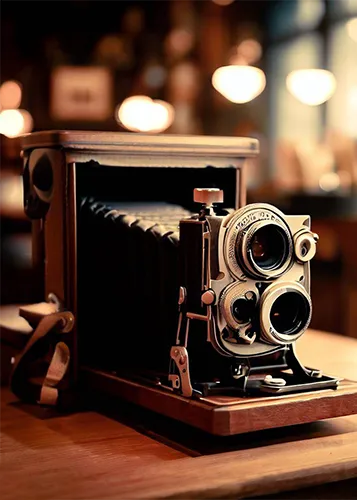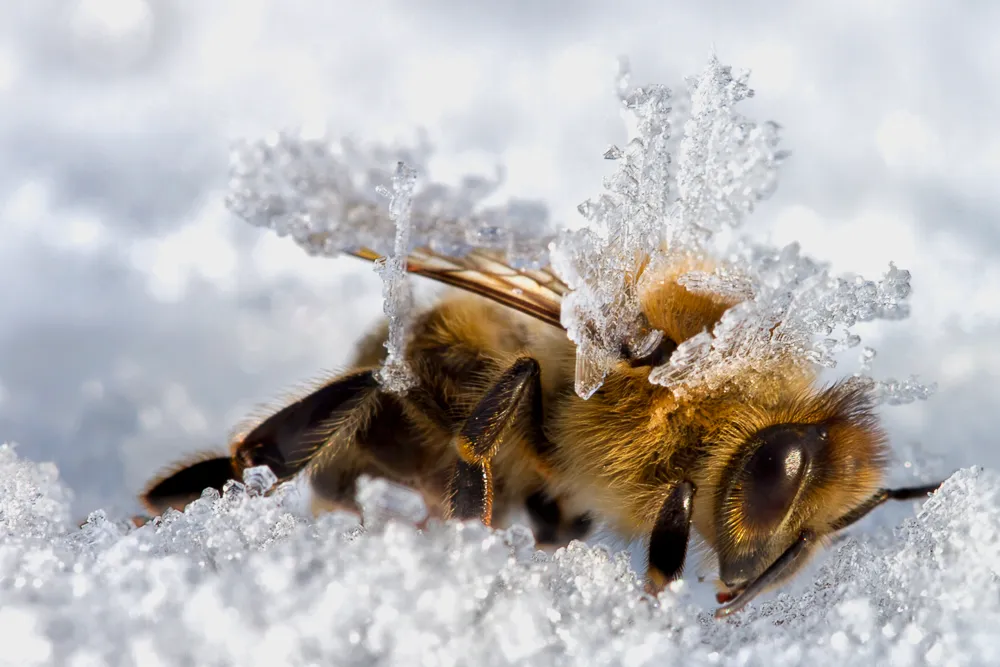
Photography as a Hobby for Beginners: Unlock Your Artistic Vision
Photography can be a fulfilling and enjoyable hobby that brings a creative outlet to your


Bracketing in photography is a technique where we shoot multiple photos of the scene with different exposure levels. This allows us to create a near perfect exposure. We also call this exposure bracketing.
Everyone should know how to bracket. It’s a sure-fire way to ensure you get a close to a near perfect photo. Whether you’re shooting in difficult lighting conditions or just want to make sure you have a range of options. Bracketing is a great technique to have in your photography toolbox. It’s also a great way to learn about exposure and how different settings affect your photos. Try it out; you may be surprised by the results!
Bracketing is a technique whereas we can overcome an issue within the scene. Let’s assume the sky in our planned photo is too bright, or the ground is too dark. We can take a series of photos at different exposure levels and combine the photos later in post. Thus, ensuring that the photo does not have any underexposed or over exposed issues. This technique often replaces the need for a graduated neutral density filter.
Bracketing helps us to get the optimal exposure for each element of the photo and yields a more detailed, toned, and realistic photo. Therefore, bracketing serves as a fail-safe for photographers to capture a lot more information in the highlights and shadows.
There are a few different types of exposure bracketing in photography, each with their own unique purpose. Here are five types you should know about:
Standard Bracketing: This is the most basic form of bracketing, where you take multiple photos at different exposure levels. Useful if you want a variety of alternatives but are unsure about the right exposure.
High Dynamic Range (HDR) Bracketing: This type of bracketing is used to capture a wider range of tonal values in a scene. It’s useful when you’re shooting in challenging lighting conditions or when you want to capture a lot of detail in both the highlights and shadows.
Focus Bracketing: This type of bracketing is used to capture multiple photos at different focus points. It’s useful when you’re shooting macro or landscape shots and want to ensure that the entire scene is in focus.
White Balance Bracketing: This type of bracketing is used to capture multiple photos at different white balance settings. It’s useful when you want to experiment with different colour tones or when you want to capture the same scene with different colour temperatures.
ISO Bracketing: This type of bracketing is used to capture multiple photos at different ISO settings. It’s useful when you want to experiment with different levels of noise, or to capture the same scene with different levels of sensitivity.
As a beginner photographer, there are a few key settings you should be familiar with when bracketing photos. Here are a few to keep in mind:
It’s important to note that not all these settings will be used while bracketing photos, and some cameras have different ways of adjusting the settings. So, it’s always a good idea to familiarize yourself with your camera’s manual and settings.

When bracketing in photography, selecting between manual mode or aperture priority mode is an important decision. It will determine how much control you have over your exposure settings, and ultimately the quality of your photos.
It’s important here not to change the F-Stop settings. You want to photo to have the same depth of field throughout this process.
Ultimately, the best option for you will depend on your skill level and desired results.
Use your camera’s recommended exposure settings to get the best results. Here is a step-by-step guide to selecting the recommended settings:
Check your histogram for all three shots. It should be different for each photo.
I believe the best approach is to take 3 photos, 1 properly exposed and then an overexposed and an underexposed photo. You will need to take at least three photos with varying exposures.
First, take one photo of the “best” natural exposure. Your camera’s light meter should be set to Weighted-Average metering for this series.
Next, take a photo slightly underexposed. Use a negative exposure, such as -1/3EV. This ensures the image is slightly darker than what your camera’s light meter suggests.
Finally, take a photo slightly overexposed. Use a positive exposure, such as +1/3EV. This image should be slightly brighter than what the camera’s light meter suggests.
Once you have taken the three photos, you can compare them to see which one has the ideal exposure for your needs. If needed, you can also combine all the images with their varying exposures into one image using Lightroom or Photoshop.
By taking three photos with different exposures, you can make sure your final image is properly exposed and capture the scene in the best way possible.

If you feel the need to take additional photos. Don’t be afraid. You are not limited to 3 photos; you can take 5 or 7 or more.
This technique is great for landscape. Why? Landscapes don’t move, therefore you can take your time shooting a landscape with different exposure levels.
You could start by setting your camera to Aperture Priority mode, compose your shot and take one photo with the default exposure settings (EV0). Then, dial in +1 exposure compensation for the overexposed image, and -1 exposure compensation for the underexposed image, and take two more photos.
Finally, observe your scene and check the histogram for any spots of overexposure and underexposure. If your scene still has a significant dynamic range that isn’t fully captured, you could capture additional images at +2/-2 stops, +3/-3 stops, and so on, until the desired results are reached.
Exposure bracketing can increase your chances of capturing a well-exposed photo. This technique captures three or more frames, with the photo exposed for the highlights, mid-tones, and shadows.
By merging the different photos in post, you can produce a full tonal image. Exposure bracketing in photography is especially useful when dealing with difficult lighting conditions, such as shooting landscapes during the golden or blue hour. Bracketing photos is a low-risk, high-reward skill for capturing moments that cannot be recaptured.
Exposure bracketing can create HDR images by taking multiple photos of the same composition at multiple exposures, then blending them together in post-processing software. Here is a step-by-step guide on how to achieve this:
By following these steps, you can use exposure bracketing to create High Dynamic Range (HDR) images with richer details and a more realistic look.
Exposure bracketing is a method of taking multiple photographs of a scene with varied settings, (like shutter speed and aperture) to optimize the exposure of the scene. This practice helps to ensure that photographers have captured the best exposure possible, creating a more dynamic and interesting photograph. This technique can also be used to create HDR images, which provide a larger tonal range to create a more dramatic look. Additionally, focus bracketing can be used to combine multiple frames that have different focus points, resulting in an image with stunning details and sharpness. Through the use of bracketing, photographers are able to achieve more creative photographs with better exposure and detail.
Exposure bracketing is a great way to capture detailed photos with low ISO and high depth of field (DOF). The process involves taking a series of photos of the same scene, each with different exposure settings. This can be done by adjusting the shutter speed, or ISO. I do not recommend adjusting your F-stop.
For example, if you are shooting a landscape, you could use exposure bracketing to take photos with different shutter speeds and a small aperture (high f-stop). This will allow you to capture a photo with a large depth of field and a lot of detail, without increasing the ISO, which would add digital noise.
Exposure bracketing is a great technique for creating panoramic photos. This technique allows photographers to capture a wide range of details in a scene, from the shadows to the highlights. Here is a step-by-step guide to creating panoramas using exposure bracketing.
Using exposure bracketing is a great way to create panoramic photos with a wide range of details. With a bit of practice, you can use this technique to capture stunning landscape shots.
In conclusion, bracketing in photography is a powerful technique that can help you achieve the perfect exposure in those difficult situations. By taking multiple photos at different exposure levels, you can ensure you have a range of options to choose from, and can find the best one for the scene you’re shooting.
We hope this blog post has helped you understand what bracketing is and how to use it in your photography. Remember to experiment with different exposure levels and test out the techniques covered in this post to find which works best for you and the scene you’re photographing. The more you practice, the better you’ll get! So, get out there and start bracketing!
Auto bracketing in photography is a feature of many modern cameras that enables the photographer to automatically take several bracketed shots, instead of manually adjusting the settings between each shot.
Using bracketing in photography is a great way to ensure that you capture the perfect shot. Here is a step-by-step guide on how to use bracketing for the best results:
An example of using bracketing in photography is when shooting a landscape. If you are shooting in manual mode, you might set your ISO, aperture and shutter speed to one set of values, then take a shot and adjust the settings slightly for the next shot. This allows you to capture the same scene with different exposures, giving you the best chance of finding the perfect photo.
When deciding whether to use bracketing, it’s important to consider the situation. For fast-paced action shots, such as wildlife, or sports, bracketing will not be the best option as it will mean missing two out of every three exposures in your sequence, including potentially the best moment of action.
The drawbacks of using bracketing in photography are. Difficult to capture action. Even if you utilize the camera’s built-in bracketing capability, bracketing takes more time if you’re attempting to work rapidly, and the extra data it generates can cause memory cards to fill up more quickly.

Photography can be a fulfilling and enjoyable hobby that brings a creative outlet to your

Welcome to our guide to Photoshop tutorials for beginners: A Complete Beginner’s Tutorial for Learning

Creating stunning images is all about nailing the perfect colour grade. It’s what makes your